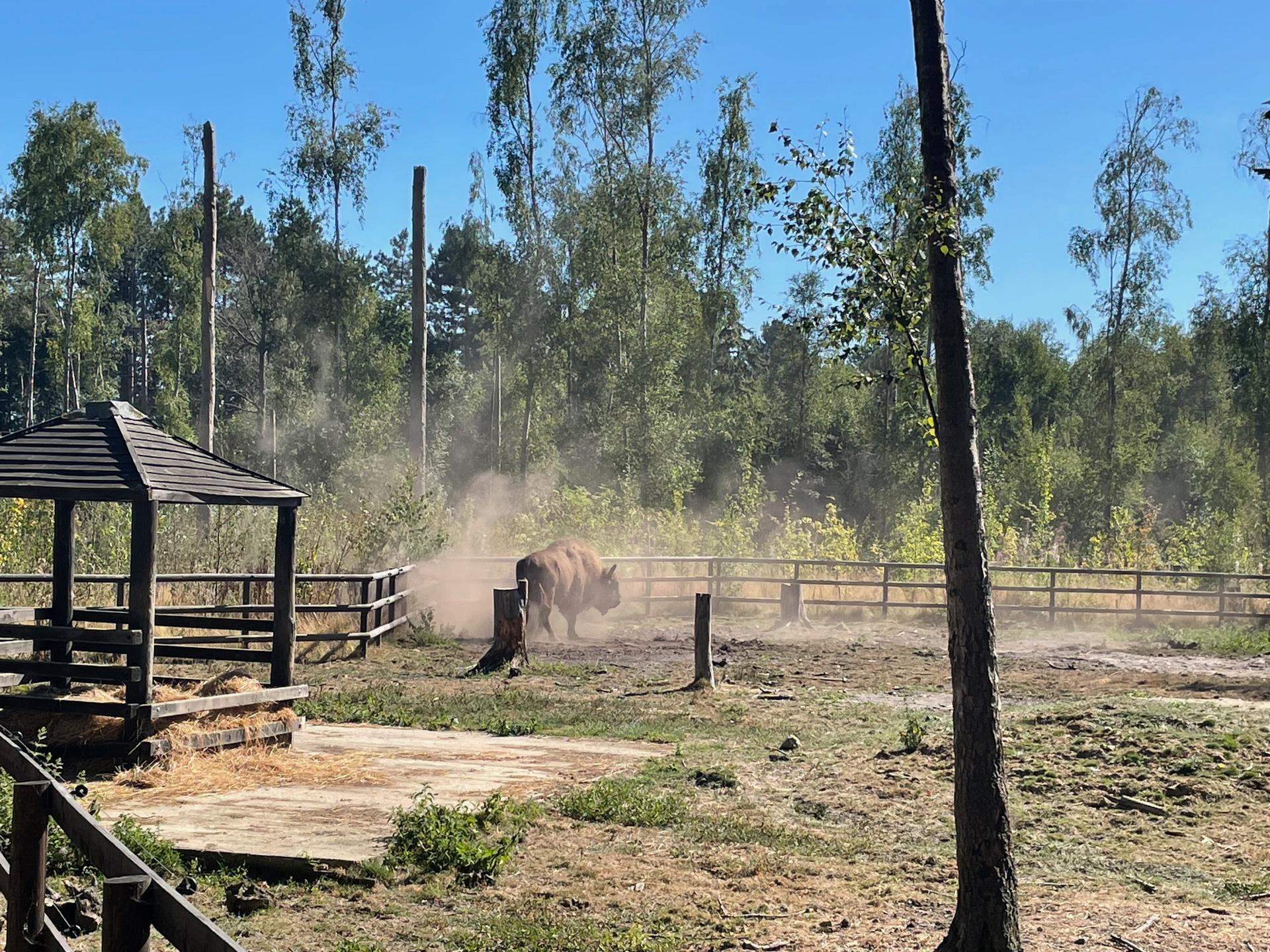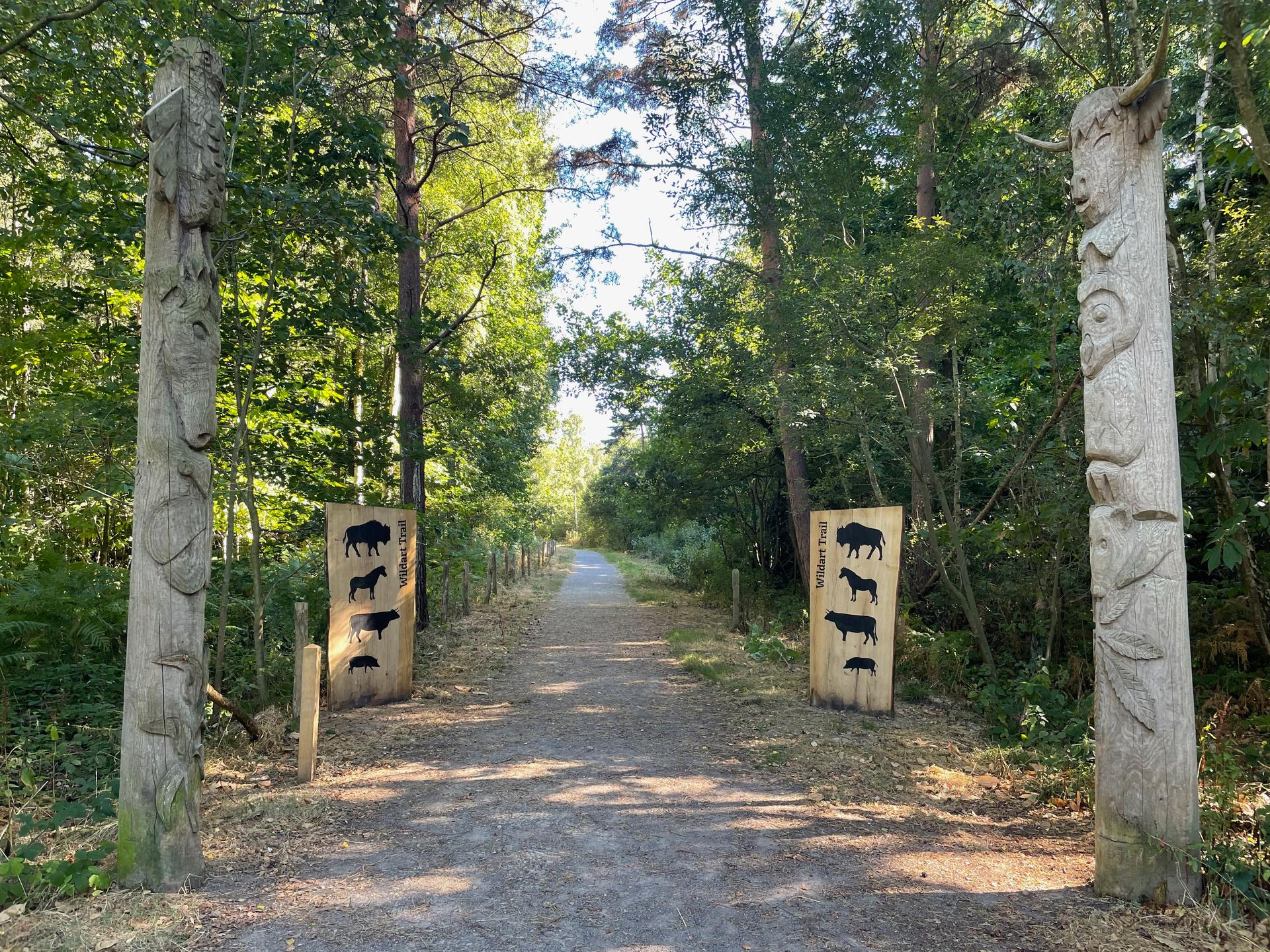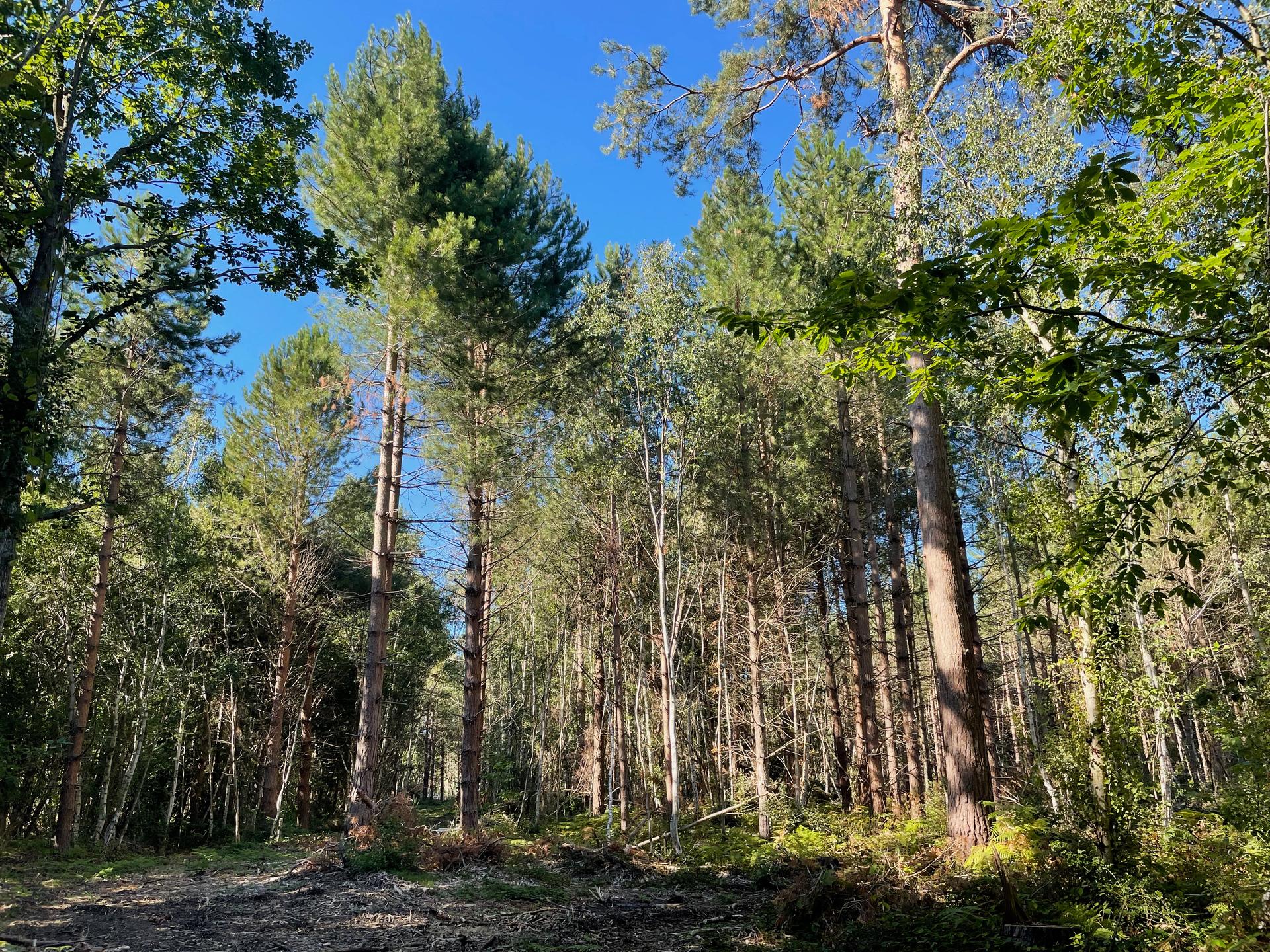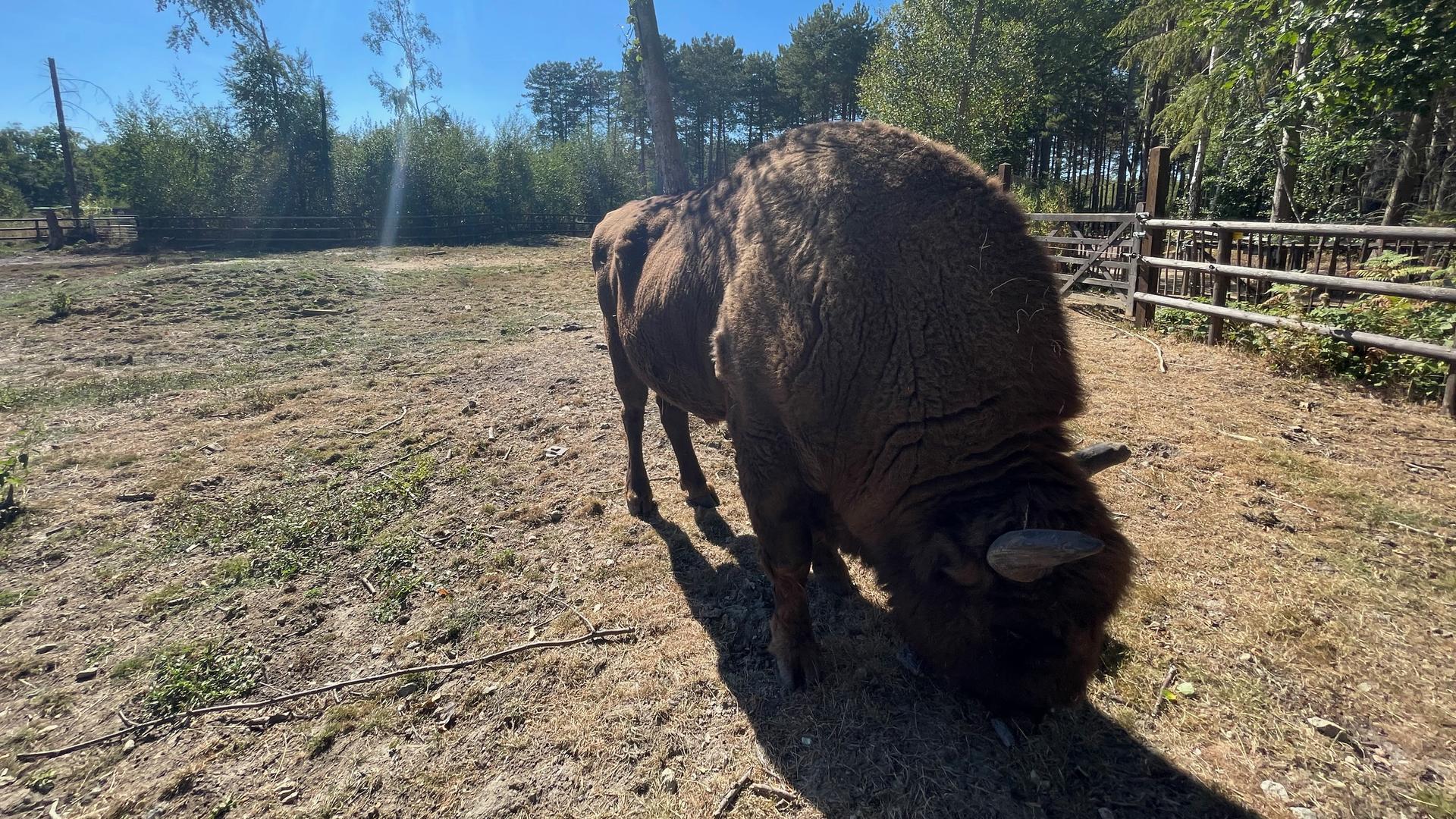Wild bison return to the UK after 6,000 years
In the searing heat of an August day in southeast England, Orsk the bison is grinding his hoof into the ground.
A cloud of dust rises to encircle him as he urinates onto the sand, kicks it around a bit and tumbles the floor, rolling around and covering himself in his own scent.
His reason is romance. Just meters away in the woods are three female bison, and since their arrival, Orsk has been regularly scenting to advertise himself as a potential suitor. That time, sadly, may never come.
Orsk is a habituated bison, and lives in an enclosure in West Blean and Thornton Woods, an 800-hectare forest by Canterbury. Last month, three females were released into the ancient woodland, becoming the first wild bison to roam the UK in over 6,000 years.
These wild bison have been brought in as ecosystem engineers, to restore wilderness to a woodland formerly used as a timber plantation.

They will thrash around the forest, eating bark and killing trees, eating and dispersing seeds, creating new habitats for other species and generally, transforming a monoculture forest into a rewilded one.
“Already, you can see that they are moving through the forest, doing exactly the sort of thing we had been really hoping that they would do,” said Paul Whitfield, director general of the Wildwood Trust.
The bison use their huge bulk to fell certain trees with great ease. This creates space for them to move, while also letting in light that will change the consistency of the woodland and provide new habitats for other animals to thrive in.
“Where there were literally trees growing right next to each other, there’s now quite a wide pathway that they’re using on a regular basis,” Whitfield said.

The dust baths, complete with urine and dung, fertilize and enrich the soil, breathing new life into the ground and helping with the establishment of key funghi populations.
Bison also rub their thick fur against trees, which tears the bark of certain trees in a ring. This can eventually kill the trees, yet leaves them upright, creating standing deadwood, an important habitat for a whole range of insects, as well as birds like the lesser-spotted woodpecker.
“Probably the best way to describe it is what the bison will do is create food webs,” said Whitfield. “So, they create lots and lots of niches and space for other species to move in.”
The hope is that these animals will not only diversify and improve local ecology but transform the woods into a more complex state, able to sequester more carbon from the atmosphere.
Aside from helping to mitigate some of the impacts of climate change, the forest should also become more resilient to them, Whitfield explained.
“So, in the middle of a hot, dry summer ,you will have a woodland that’s far more capable of tolerating drought and disease,” Whitefield said. “And in a wetter, warmer winter, again, it will be able to deal with that better and avoid disease.”
The effects of the bison reintroduction is being measured by an extensive monitoring system. The bison are fitted with GPS trackers to show how their movement has changed the local ecology. Drones will fly overhead, mapping changes in vegetation. And a team of dedicated researchers including surveys of animal and plant life, soil quality, and even the bison dung.

The bison release comes at a time when the UK is facing a difficult summer, of intense heat waves and now drought. Indeed, the UK is in a poor place both environmentally and ecologically, said Richard Bunting, a spokesman for Rewilding Britain.
“If you look at Scotland, for example, a lot of the very beautiful mountains there are actually ecologically poor, they’re ecological deserts in many ways because the woodlands that should be there have been destroyed over the centuries.”
Only around 1% of the UK is currently being rewilded, explained Bunting, which offers a huge opportunity to expand this conservation strategy.
“What it does offer is nature-based solutions to these serious problems and at the moment we’re really only scratching the surface of those solutions,” he said.
For now, the bison have been released into a fairly small plot of just a few acres.
Over time, they will spread throughout the forest to continue their work. The females will soon be joined by a wild bull from Germany, and if all goes to plan, they will breed new genetic lines. Other animals — each with distinct ecological roles — will also join the bison over the coming months and years, including longhorn cattle, iron age pigs, and Exmoor ponies.
For Bob Smith, director of the Durrell Institute of Conservation and Ecology at the University of Kent, there is a growing recognition that restoring natural woodland would be a robust climate mitigation strategy.
“Long term, woodlands with large herbivores across the UK would be one of the best ways to capture carbon. Especially in a way that then meets all the biodiversity targets that we have,” he said.
Whitfield says that when it comes to tackling biodiversity loss and climate change, the bison project is just one part of the puzzle. But it’s an optimistic one, he stressed, and that is key.
“I actually think that is really powerful, and possibly more powerful than what they’re actually going to do in the woodlands here,” he said. “It will inspire people to be positive and do stuff, rather than just giving up and being depressed about how awful it all is.”
